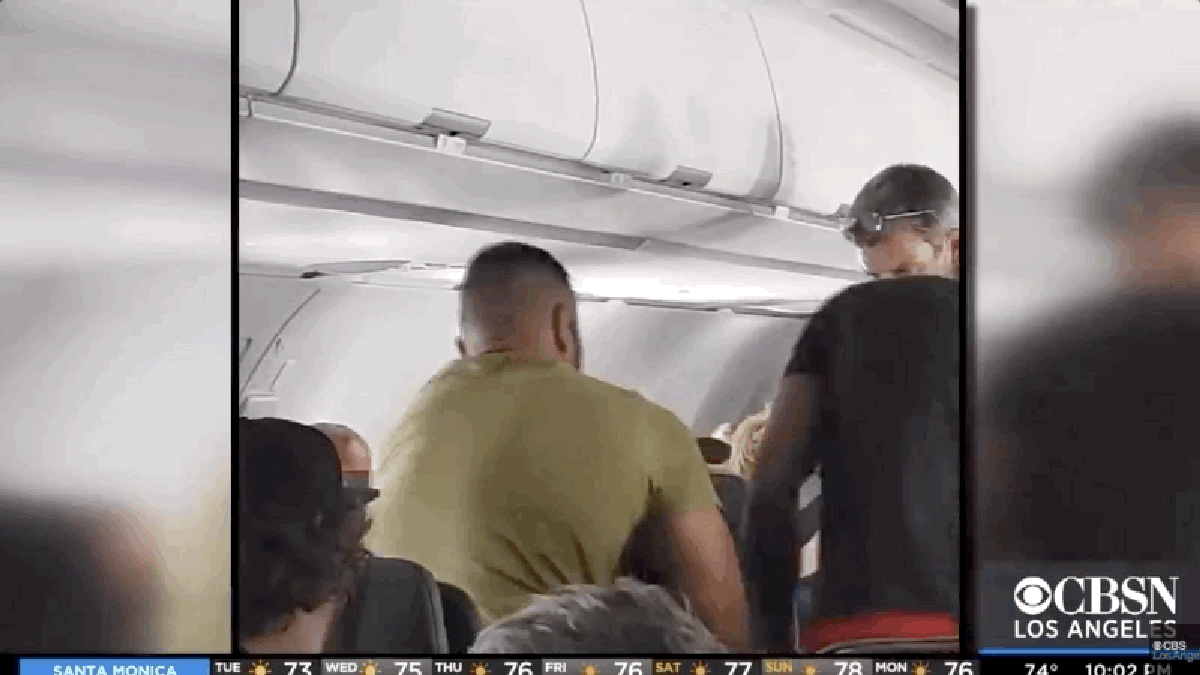
In this case, the passenger wasn’t inebriated on to-go alcohol from an airport concession stand. At this time, the cause of the outburst is unknown. The flight diverted to Honolulu, where it landed safely. American Airlines says that it put passengers on other flights or put them in hotel rooms.
While the flight attendant is seen unraveling a large strip of duct tape in the video, American Airlines says that the teen was retrained with flexible handcuffs, not duct tape. But how do flight attendants get to the point where they need to tape or cuff a passenger down?
Some flight attendants spoke to Business Insider and indicated that the first step in calming a passenger is trying to talk it out:
Before using any physical restraints, flight attendants are trained to de-escalate situations by verbally calming down aggressive passengers, one Chicago-based flight attendant said. (Some flight attendants asked to keep their name and airline anonymous to speak freely. Insider confirmed the employment of each flight attendant prior to publishing.)
G/O Media may get a commission
If that passenger becomes a danger to the flight or other passengers and de-escalation tactics have failed, then the attendants may choose to restrain them for the remainder of the flight. But, as the Points Guy notes, it’s not as simple as grabbing some tape or zip ties:
The International Air Transport Association (IATA) explained to TPG that restraining a passenger is only ever used as a last resort, where all other methods of de-escalating a situation have failed.
“Before restraining a passenger, the cabin crew will always seek the permission of the Commander (Captain) who will give their authorization if they perceive a risk to the safety of the flight, the crew or other persons onboard.” Katherine Kaczynska, a spokesperson from IATA said.
Advertisement
Restraining a passenger also comes with a potential danger. The Federal Aviation Administration says that for an aircraft to be certified, it has to be able to be evacuated in an emergency within 90 seconds. A passenger duct taped or zip tied to a seat complicates that, as they now need to be unrestrained while everyone is dealing with an emergency.
As of August 8, the FAA has received 3,810 reports of unruly passengers and is conducting 655 investigations. The regulator says 112 of those investigations have resulted in fines.
